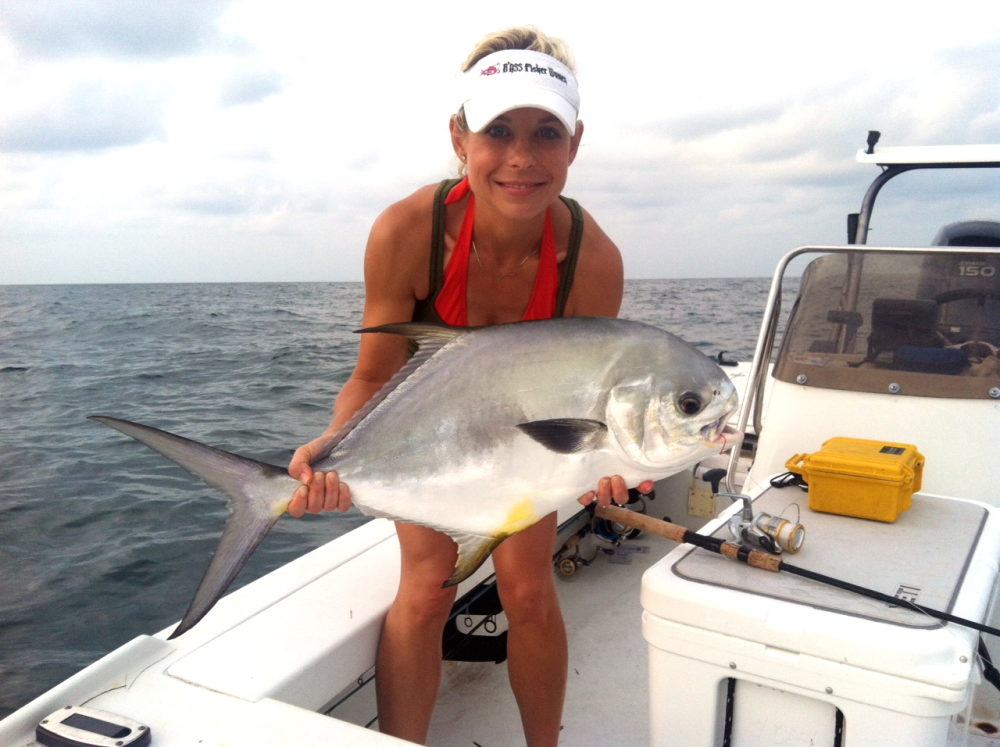Fishing resources and tips for the empowered female angler.
5 Offshore Permit Fishing Pointers
August 20, 2012
I’ve fallen in love… with permit fishing! After a few months of targeting my favorite saltwater sport fish, the tarpon, I decided to mix it up by heading offshore in search of another species known for its strong runs and hearty appetite for pass crabs.
Permit Regulations Update
In June 2011, the Florida Fish and Wildlife Conservation Commission amended state regulations for permit, Florida pompano and African pompano in order to provide increased protection for these species. The new rules create two separate management areas in Florida for permit: the Special Permit Zone (SPZ) and Florida waters outside the SPZ (north of Cape Florida and Cape Sable). The Special Permit Zone (SPZ) lies in south Florida, encompassing waters south of Cape Florida on the Atlantic coast and south of Cape Sable on the Gulf coast. The regulations for permit in the SPZ are more restrictive to protect spawning aggregations of permit as well as large permit that support the trophy fishery in the Keys. Be sure to check FWC’s website if you aren’t certain of the minimum size limits that pertain to the area you are fishing.
5 Offshore Permit Fishing Pointers
- Focus on fishing offshore Florida wrecks and reefs during the summer months. The months of May through September are generally best for permit fishing in Southwest Florida.
- Don’t blow into your fishing spot! Shut off your engine and use a trolling motor to approach with the least amount of noise possible. Be as stealthy as you possibly can because permit are a very skittish species. Any loud noise will scare them off.
- Keep a close eye on floating weeds and weed lines. Permit can often be seen near the surface scouting out floating weeds for crabs or other crustaceans.
- Use live pass crabs for bait. Allow your crab to swim freely and keep a close watch on your line to detect a strike. When you notice a fish picking up the bait, be sure to engage your reel immediately and reel in any slack line.
- Maintain sideways pressure on the fish. This means keeping pressure on the line in the opposite direction that the fish is running. Sideways pressure will not only help keep the fish hooked, but also maintain the right amount of tension so that the line doesn’t break. Pay close attention as you gain line. Just when you think you almost have a permit to the boat, it will take a hard run and the madness will start all over again.
Keep these permit fishing pointers in mind, and you’ll have a much better chance of bringing one of Florida’s most famed sport fish species to the boat. Have you caught a permit recently? Share photos of your catch and inspire other lady anglers by sharing your photo to the Shefishes2 Facebook page.
